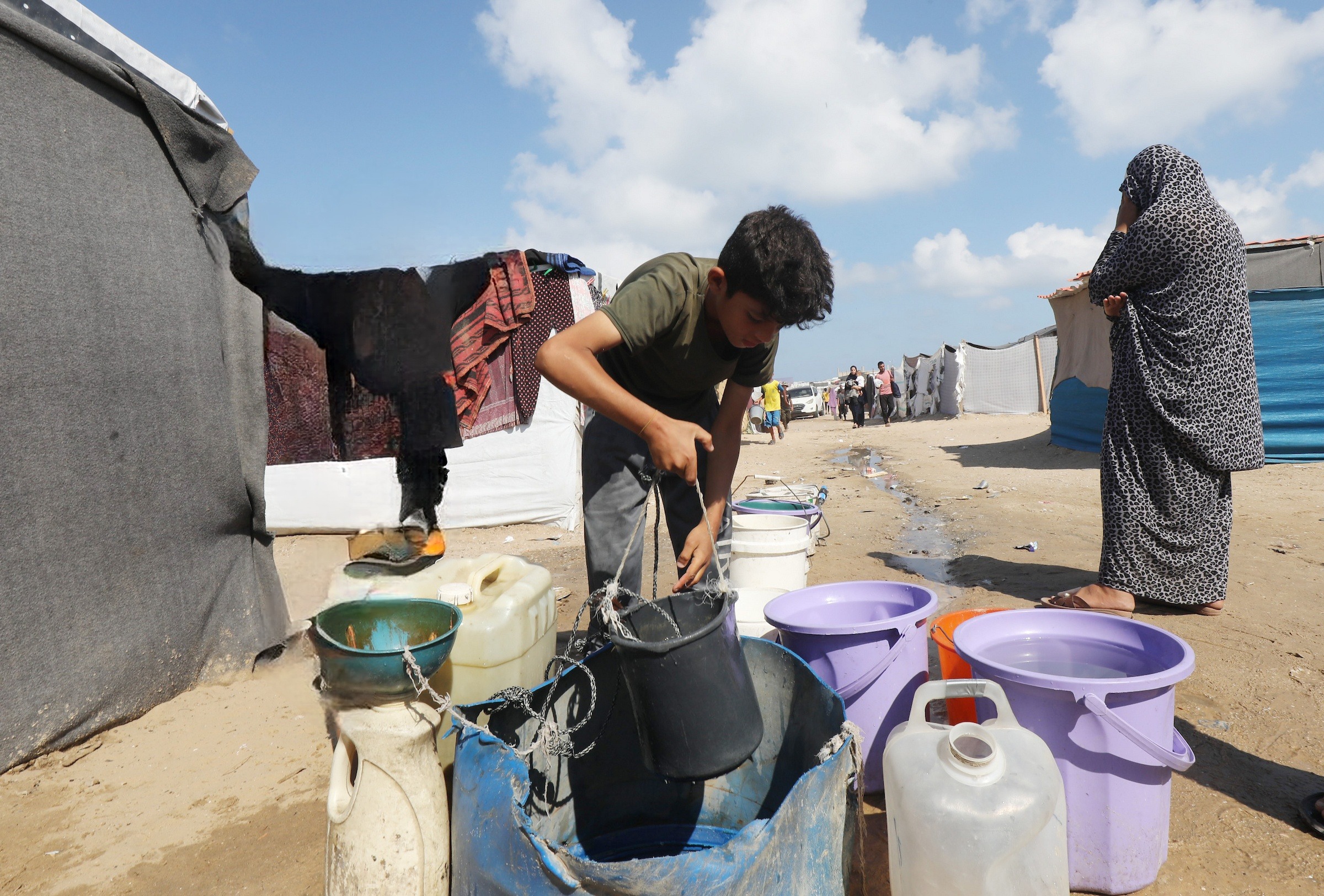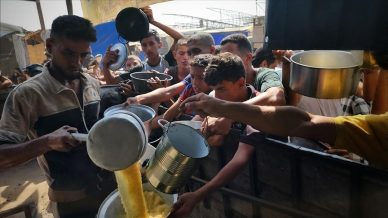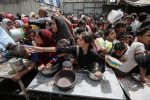GAZA, (PIC)
Every day, thousands of citizens in the Gaza Strip endure a grueling journey to secure a little water for their drinking and washing needs after 18 months of genocidal warfare, during which Israel uses “thirst” and “water cuts” as weapons to transform the Strip into an uninhabitable place and eradicate the Palestinian presence.
The Palestinian Center for Human Rights warns of an unprecedented humanitarian catastrophe threatening the lives of 2.3 million Palestinians in the Gaza Strip, who face a horrific reality condemned to a slow death due to systematic deprivation of clean and safe water sources.
This warning comes on the occasion of World Water Day, observed annually on March 22, amid Israel’s continued use of water as a tool for collective punishment in its ongoing aggression against the Gaza Strip for 17 months.
Destruction of water infrastructure
The water infrastructure in the Gaza Strip has suffered massive destruction due to deliberate Israeli targeting, leading to the destruction of water desalination facilities, sewage treatment plants, water tanks, and distribution networks over the past months.
Occupation forces have also prevented the entry of maintenance equipment and spare parts, as well as cutting off necessary energy and fuel supplies to operate these facilities, forcing residents to rely on minimal and contaminated water supplies.
Human rights reports indicate that more than 97% of the groundwater in the Gaza Strip has become unfit for human consumption due to high levels of pollution and salinity, resulting from occupation practices that include building dams and water traps to prevent groundwater replenishment.
Sharp decline in individual water share
Before October 2023, the daily water share per person was 86 liters, but it sharply declined during the Israeli aggression to between 3-12 liters, a level far below the World Health Organization’s recommended minimum of 100 liters per day to meet basic needs.
In March 2025, Israel decided again to tighten its blockade by closing border crossings and preventing the entry of humanitarian aid, including fuel necessary for operating water desalination plants, exacerbating the crisis, especially after occupation forces cut electricity supplies to the central water treatment stations in Deir al-Balah, reducing desalinated water production by 80% and depriving more than 600,000 Palestinians in central and southern areas of the enclave of clean water.
Escalating health risks
Regarding the sewage system, the destruction of 73 wastewater pumping stations has worsened environmental and health conditions, as massive amounts of sewage are pumped back into the sea, threatening the spread of diseases and epidemics, especially with the collapse of the healthcare system in Gaza.
The World Health Organization points to the continued presence of the polio virus in sewage water, posing a significant risk to children and immunocompromised individuals.
Recently, the Gaza Strip Municipalities Union stated that the Gaza Strip is experiencing a comprehensive humanitarian disaster, with local authorities announcing their inability to provide water and sewage services to residents, as their facilities have gone out of service due to recent Israeli actions.
Major thirst crisis
Municipalities in Gaza have warned of a “major thirst crisis” that will occur if Israel carries out its threat to stop pumping water from “Mekorot” to the Gaza Strip through three main connections in the north, center, and south of the Strip, which supply approximately 53,000 cubic meters of water daily. This would mean depriving 70% of the population of their water needs, worsening health and environmental conditions, amid ongoing sewage flooding and the accumulation of thousands of tons of solid waste in residential areas and shelters, with fears of the spread of infectious diseases and epidemics due to the collapse of the healthcare system and the inability to provide effective medical care.
Engineer Munther Shiblak, director of the Coastal Municipal Water Utility, confirms that the Gaza Strip has suffered from a real environmental crisis and a shortage of clean water sources throughout the years of the Israeli blockade that began 17 years ago. He stated that the level of destruction inflicted on water and sewage facilities in recent months has reached more than 80%, estimated at $680 million, and this data remains preliminary amid the ongoing war and the difficulty of accessing affected sites in the eastern, northern, and southern Gaza Strip.
Flagrant violation
The Palestinian Center for Human Rights believes that Israel’s deliberate destruction of water and sewage infrastructure in the Gaza Strip and its deprivation of residents’ right to clean and safe water amounts to genocide.
The center also asserts that these practices constitute a flagrant violation of international human rights law and international humanitarian law, which prohibit targeting essential civilian objects necessary for the survival of the population.
The human rights center calls on the international community to take urgent action to stop these crimes, ensure accountability for Israel’s ongoing violations, and provide urgent protection for the residents of the Gaza Strip, who face the threat of thirst and death due to the occupation’s policies aimed at transforming the Strip into an uninhabitable environment.














